|
Books Should Be Free Loyal Books Free Public Domain Audiobooks & eBook Downloads |
|
|
Books Should Be Free Loyal Books Free Public Domain Audiobooks & eBook Downloads |
|
Religion |
|---|
|
Book type:
Sort by:
View by:
|
By: John Stuart Mill (1806-1873) | |
|---|---|
 Three Essays on Religion
Three Essays on Religion
The Three Essays on Religion were written at different times during Mill's life, and only published after his death. The first two, 'Nature' and 'The Utility of Religion' date from the 1850s - the period between the publication of 'The Principles of Political Economy' and 'On Liberty'. The third longer essay, 'Theism' was written between 1868 and 1870. The three essays were published posthumously in 1874. | |
By: Winfrid Herbst | |
|---|---|
 Just Stories: The Kind That Never Grow Old
Just Stories: The Kind That Never Grow Old
Good Books are wise counselors. They point out the right way in the devious paths of life. Have we not often stood at the juncture of two roads, the one of righteousness and the other of unfaithfulness, and was it not then that some golden little book acted the part of an opportune adviser and directed us down the highway of truth? Is there one of us who can truthfully say that good books have not been his loyal and trustworthy helpers, his vigilant guardians in life's intricate ways? This unpretentious little book of goodness stories, a companion volume to "Tell Us Another," must speak for itself... | |
By: W. O. E. Oesterley (1866-1950) | |
|---|---|
 Immortality and the Unseen World
Immortality and the Unseen World
The full title of this book is Immortality and the Unseen World - A Study in Old Testament Religion. Oesterley describes the beliefs that pre-Christian Hebrews and Semites held regarding the afterlife and the immortal nature of humans. The nature, form and evolution of these beliefs are derived from the Tanakh (Old Testament), comparisons with the beliefs and mythologies of neighboring cultures, and archeological finds. To develop a full study, additional beliefs of these people are also considered, including the beliefs of the constituent parts of humans; demonology, angelology, shades and the Satan; the home of the dead, ancestor worship, necromancy, and burial customs... | |
By: Edward M. Bounds (1835-1913) | |
|---|---|
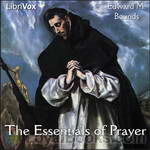 The Essentials of Prayer
The Essentials of Prayer
The Sunday School Times says of the author, "he was a specialist in prayer and his books are for the quiet hour, for careful meditation and for all who wish to seek and find the treasures of God." This book is a ready helper for those who want to follow his path, with more and better communication with the Lord. | |
By: Saint Catherine of Genoa (1447-1510) | |
|---|---|
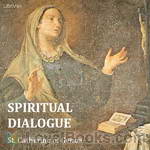 Spiritual Dialogue Between the Soul, the Body, Self-Love, the Spirit, Humanity, and the Lord God
Spiritual Dialogue Between the Soul, the Body, Self-Love, the Spirit, Humanity, and the Lord God
Saint Catherine of Genoa (Caterina Fieschi Adorno, born Genoa 1447 – 15 September 1510) is an Italian Roman Catholic saint and mystic, admired for her work among the sick and the poor. She was a member of the noble Fieschi family, and spent most of her life and her means serving the sick, especially during the plague which ravaged Genoa in 1497 and 1501. She died in that city in 1510.In 1551, 41 years after her death, a book about her life and teaching was published, entitled Libro de la vita mirabile et dottrina santa de la Beata Caterinetta de Genoa... | |
By: Basil of Caesarea (329/30?-378/9) | |
|---|---|
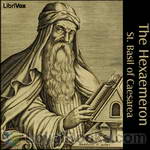 The Hexaemeron
The Hexaemeron
The Hexaemeron is the title of nine homilies delivered by St. Basil on the the cosmogony of the opening chapters of Genesis. When and where they were delivered is quite uncertain. They are Lenten sermons, delivered at both the morning and evening services, and appear to have been listened to by working men. (Hom. iii. 1) Some words in Hom. viii. have confirmed the opinion that they were preached extempore, in accordance with what is believed to have been Basil's ordinary practice. Internal evidence... | |
By: Francis Cassilly (1860-1938) | |
|---|---|
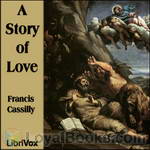 A Story of Love
A Story of Love
This is not a love story, but the story of love, a love which every man and woman was created to experience, a love so intense and fulfilling that it scarcely seems possible to grasp, yet one that is offered to every human person who opens his heart and mind to its beauty and wonder. This is a love that so many of our forefathers have found and even now enjoy, but which so many of us still seek. The American Jesuit Father Cassilly opens our eyes to this love, the unifying and personal love between the human person and his Creator... | |
By: Anonymous | |
|---|---|
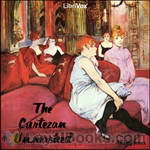 The Curtezan Unmasked
The Curtezan Unmasked
"The Curtezan unmasked or, the Whoredomes of Jezebel Painted to the Life: With Antidotes against them, or Heavenly Julips to cool Men in the Fever of Lust" is a fire-and-brimstone polemic by "A Spiritual Physician" to persuade young men not to succumb to harlotry and its accompanying perils. (Introduction by Denny Sayers) | |
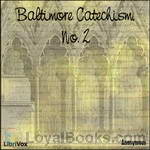 Baltimore Catechism, No. 2 -- Catechism of Christian Doctrine
Baltimore Catechism, No. 2 -- Catechism of Christian Doctrine
A catechism is a summary of the principles of Christian religion and articles of the faith. The Baltimore Catechism specifically was the de facto standard Catholic school text in the United States from 1885 to the late 1960s. It was the first such catechism written for Catholics in North America, replacing a translation of Bellarmine's Small Catechism. The Baltimore Catechism remained in use in nearly all Catholic schools until many moved away from catechism-based education, though it is still used up to this day in some. (Summary by Wikipedia) | |
By: Henry Rider Haggard (1856-1925) | |
|---|---|
 Pearl Maiden
Pearl Maiden
This is the story of Miriam, an orphan Christian woman living in Rome in the first century. She falls in love with a Roman officer, but knows that her Jewish childhood playmate loves her too and will do anything in order to get her love in return. | |
By: Cardinal Nicholas Patrick Wiseman (1802-1865) | |
|---|---|
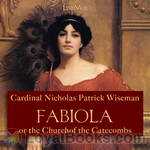 Fabiola or The Church of the Catacombs
Fabiola or The Church of the Catacombs
This historical novel is set in Rome in the early 4th century AD, during the time of the cruel persecution of Christians under the Emperor Diocletian. The heroine of the book is Fabiola, a young pagan beauty from a noble Roman family. Fabiola seems to have everything, including a superior education in the philosophers, yet under the surface, she is not content with her life. One day, in a fit of rage, she attacks and wounds her slave girl Syra, who is a secret Christian. The proud, spoiled Roman girl is humbled by Syra's humility, maturity and devotion to her in this situation, and a slow transformation begins... | |
By: Leo The Great | |
|---|---|
 Sermons of Leo the Great, Bishop of Rome
Sermons of Leo the Great, Bishop of Rome
Leo the Great was unanimously elected Bishop of Rome on September 29, 440 a.d. At the Council of Chalcedon, his famous "Tome" was a decisive contribution to the Christological controversies of the fifth century. But the Tome did not stand alone. It was written in the context of over two decades of pastoral sensitivity. This collection of sermons is the best way to let Leo himself unpack the nuances and power of Chalcedonian Christology according to one of its most influential proponents. (Introduction by Jonathan Lange) | |
By: Charles H. Spurgeon (1834-1892) | |
|---|---|
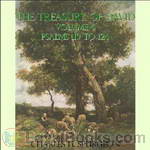 The Treasury of David, Vol. 6 (Abridged)
The Treasury of David, Vol. 6 (Abridged)
Charles Spurgeon was a British Particular Baptist preacher who remains highly influential among Christians of different denominations, among whom he is still known as the "Prince of Preachers". In his lifetime, Spurgeon preached to around 10,000,000 people, often up to 10 times each week at different places. He was the pastor of the congregation of the New Park Street Chapel (later the Metropolitan Tabernacle) in London for 38 years.Spurgeon was a prolific author of many types of works. This sixth volume of Spurgeon’s commentary on the Psalms covers Psalm 119 to Psalm 124. | |
By: Upton Sinclair (1878-1968) | |
|---|---|
 They Call Me Carpenter
They Call Me Carpenter
The story takes place in the fictional city of Western City circa 1920. It begins with a man named Billy who is attacked by a mob of ex-servicemen outside a theater after watching a German film. Billy stumbles into a church to escape the mob and is visited by Carpenter, that is Jesus, who walks out of the stained glass window of the church. Carpenter is shocked and appalled by his observations of greed, selfishness, lust, sorrow, and the ultimate division between rich and poor. The story then roughly follows the ministry of Jesus. | |
By: William Bernard Ullathorne (1806-1889) | |
|---|---|
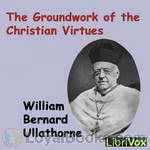 The Groundwork of the Christian Virtues
The Groundwork of the Christian Virtues
William Bernard Ullathorne was a Benedictine monk and Roman Catholic priest who ministered in Australia from 1833 until 1840 and then returned to his native England, where he was ordained a bishop in 1847 and served as Bishop of Birmingham from 1850 until 1888. He is best known for his catechetical trilogy: The Endowments of Man, The Groundwork of the Christian Virtues, and Christian Patience, published in the 1880s. The Groundwork of the Christian Virtues is presented in sixteen lectures, wherein Bishop Ullathorne makes the case that the virtue of humility is the foundation of all virtues, especially of the three theological virtues and the four cardinal moral virtues... | |
By: Pansy (1841-1930) | |
|---|---|
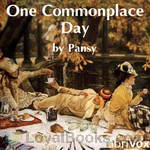 One Commonplace Day
One Commonplace Day
A temperance lecturer misses his train and ends up attending a town picnic. It was a common enough picnic on a commonplace day. But the discussions, actions, and attitudes from that picnic reverberate through the lives of many people. What are the far-reaching consequences of one commonplace day in OUR lives? | |
By: Samuel D. Gordon (1859-1936) | |
|---|---|
 Quiet Talks about Jesus
Quiet Talks about Jesus
So far as I can find out, I have no theory about Jesus to make these talks fit into. I have tried to find out for myself what the old Book of God tells about Him. And here I am trying to tell to others, as simply as I can, what I found. It was by the tedious, twisting path of doubt that I climbed the hill of truth up to some of its summits of certainty. I am free to confess that I am ignorant of the subject treated here save for the statements of that Book, and for the assent within my own spirit to these statements, which has greatly deepened the impression they made, and make... | |
By: Silas Hocking (1850-1935) | |
|---|---|
 Her Benny
Her Benny
A very heart touching story about two homeless children, a brother and sister, living on the streets of Liverpool, England during Victorian times. | |
By: Philip Melanchthon (1497-1560) | |
|---|---|
 The Defense of the Augsburg Confession
The Defense of the Augsburg Confession
The Apology of the Augsburg Confession was written by Philip Melanchthon during and after the 1530 Diet of Augsburg as a response to the Pontifical Confutation of the Augsburg Confession, Charles V's commissioned official Roman Catholic response to the Lutheran Augsburg Confession of June 25, 1530. It was intended to be a defense of the Augsburg Confession and a refutation of the Confutation. It was signed as a confession of faith by leading Lutheran magnates and clergy at the meeting of the Smalcald League in February, 1537, and subsequently included in the German [1580] and Latin [1584] Book of Concord... | |
By: Arthur Machen (1863-1947) | |
|---|---|
 The Angels of Mons
The Angels of Mons
The Angels of Mons is a popular legend about a group of angels who supposedly protected members of the British army in the Battle of Mons at the outset of World War I. The story is fictitious, developed through a combination of a patriotic short story by Arthur Machen, rumours, mass hysteria and urban legend, claimed visions after the battle and also possibly deliberately seeded propaganda. | |
By: Charles Warren Stoddard | |
|---|---|
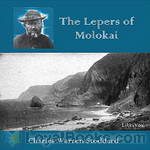 The Lepers of Molokai
The Lepers of Molokai
This is the story of the lepers of Molokai and of the Roman Catholic missionary, Father Damien, who ministered to those who languished in that desolate place, waiting for death to release them from a most intense form of physical and mental suffering. Fr. Damien, born Jozef De Veuster, was a Roman Catholic priest from Belgium and member of the Congregation of the Sacred Hearts of Jesus and Mary, a missionary religious order. He won recognition for his ministry to people with leprosy (Hansen's disease), who had been placed under a government-sanctioned medical quarantine on the remote island of Molokai in the Kingdom of Hawaii... | |
By: Robert Hugh Benson (1871-1914) | |
|---|---|
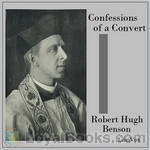 Confessions of a Convert
Confessions of a Convert
Robert Hugh Benson was the youngest son of Edward White Benson, the Archbishop of Canterbury and his wife Mary. Benson was was a prolific and popular writer during his time, and in 1903 he became a prominent convert to the Roman Catholic Church from Anglicanism . In 1904 he was ordained a Catholic priest.This book is his personal story of his journey to the Catholic faith, containing comparisons between Catholicism and the Anglican religion. | |
By: Anonymous | |
|---|---|
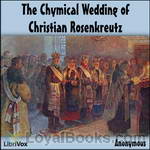 The Chymical Wedding of Christian Rosenkreutz
The Chymical Wedding of Christian Rosenkreutz
The Chymical Wedding of Christian Rosenkreutz was edited in 1616 in Strasbourg (annexed by France in 1681). It is the third of the original manifestos of the mysterious "Fraternity of the Rose Cross" (Rosicrucians). NOTE: It was translated into English for the first time in 1690 by E. Foxcroft. This translation became the source for many of the modern attempts to improve the original. The translation presented here is that of E. Foxcroft. Although the book first appeared in 1616, the story takes place over 150 years earlier... | |
By: Theodor Herzl (1860-1904) | |
|---|---|
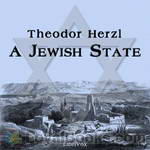 A Jewish State
A Jewish State
Read in English, this is a pivotal document in the history of Zionism and the State of Israel. Herzl designed this work to elevate the discussion of "the Jewish Question" so it would "no longer take the form of violent abuse or sentimental vindication but of a debate, practical, large, earnest, and political." While few of Herzl's proposals were actually carried out, the importance of A JEWISH STATE was in the groundswell of support for a Jewish homeland engendered by its solutions to the practical problems of establishing a new state... | |
By: Jean Guibert (1857-1914) | |
|---|---|
 On the Exercises of Piety
On the Exercises of Piety
In this book, Father Jean Guibert of the Society of St. Sulpice shows how piety permeates the spiritual life in mental and vocal prayer, in the sacraments, in various devotions, in spiritual reading, in the examination of one's conscience, and in spiritual retreats. This book is the sequel to Father Guibert's On Piety, wherein he explains the nature of piety and its effects. Both books bear an imprimatur. | |
By: Anonymous | |
|---|---|
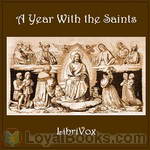 A Year With the Saints
A Year With the Saints
Go through the year in the footsteps of the saints. This book emphasizes one virtue for each month with quotes and stories from the lives of the saints to help teach and inspire that particular virtue in us.For January, Perfection; February, Humility; March, Mortification; April, Patience; May, Meekness; June, Obedience; July, Simplicity; August, Diligence; September, Prayer; October, Confidence; November, Charity; and December, Union. | |
By: Pauline von Hugel (1858-1901) | |
|---|---|
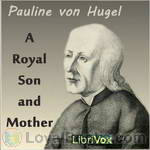 A Royal Son and Mother
A Royal Son and Mother
Demetrius Augustine Gallitzin (1770-1840) was an emigre Russian aristocrat and Catholic priest who is acclaimed as "The Apostle of the Alleghenies." He is the son of Prince Dimitri Alexeievich, a Russian ambassador to the Netherlands, and the German Countess Adelheid Amalie von Schmettau. Demetrius was raised Russian Orthodox, but at age seventeen he converted to Catholicism, the faith of his mother, following her miraculous recovery from a serious illness. Although the ambassador had planned a military career for his son and had sent him to America for an education, he was shocked to learn that his son had renounced his inheritance and had entered a seminary instead... | |
By: Robert Hugh Benson (1871-1914) | |
|---|---|
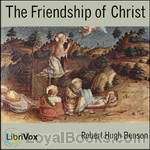 The Friendship of Christ
The Friendship of Christ
Robert Hugh Benson, who was educated at Eton College and Trinity College, Cambridge, was ordained an Anglican priest in 1895 by his father, the Archbishop of Canterbury. Eight years later, after weighty consideration, Robert Benson converted to Roman Catholicism. In 1904 he was ordained a Roman Catholic priest and took up residence in Cambridge, where he ministered to Roman Catholic students as their unofficial chaplain. In 1911, he was made a monsignor. Despite the brevity of his earthly life, Benson... | |
By: William Alexander MacKay (1842-1905) | |
|---|---|
 Zorra Boys at Home and Abroad, or, How to Succeed
Zorra Boys at Home and Abroad, or, How to Succeed
By Zorra, in the following sketches, is meant a little district in Oxford county, Ontario, some ten miles square, composed of part of East and part of West Zorra, and containing a population of about fourteen hundred. It was settled about the year 1830, chiefly by Highlanders from Sutherlandshire, Scotland.Within the last forty years there have gone from this district over one hundred young men who have made their mark in the world. With most of these it has been the writer's good fortune to be personally and intimately acquainted; and companionship with some of them has been to him a pleasure and a benefit... | |
By: Unknown | |
|---|---|
 New Etext of Bible [King James Version]
New Etext of Bible [King James Version]
| |
By: Rev. Gerald T. Brennan (1898-1962) | |
|---|---|
 Angel Food Time: Little Talks to Little Folks
Angel Food Time: Little Talks to Little Folks
This is the sixth and final volume of the "Angel Food" Series by Father Brennan. This volume consists of 28 charming selections with titles such as "Six Red Roses", "The Three Little Angels", "A Surprise From Santa Claus" and "The Boy Who Dusted the Devil's Tail". | |
By: John Wycliffe (1328-1384) | |
|---|---|
 Ecclesiastes (Wycliffe, 1395)
Ecclesiastes (Wycliffe, 1395)
“… an alemaunde tre schal floure, a locuste schal be maad fat, and capparis schal be distried; for a man schal go in to the hous of his euerlastyngnesse…” – Eccl. xii, 5 (see Note below).Traditionally composed by Solomon sometime around 950-970 BCE but dated on linguistic evidence somewhere in the third century, this meditation on the futility of mankind’s striving can bring comfort to those of firm or fragile faith, or of no faith at all. The text used here is a revision of Wycliffe’s original translation, made by his follower John Purvey in the mid-1390s... | |